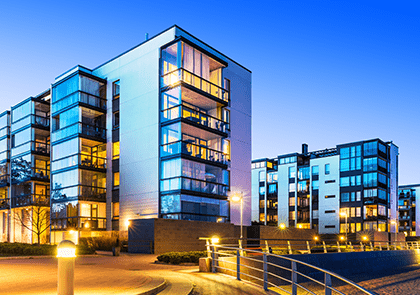Lighting design brings together art and science: requiring the designer to apply both creative, visually appealing, and effective spaces. Lighting professionals work in a variety of roles and project areas: malls, hospitals, residences, roads, tunnels, sports arenas, and more. The Engineering Institute of Technology (EIT) is offering a 52856WA – Advanced Diploma of Illumination Engineering and Lighting Design, starting in November, that will equip students looking to go into the lighting industry with the fundamentals of illumination and lighting.
Lighting also happens to be essential for crop-growing in greenhouses, which in turn, helps geographical regions develop food security. The growth lights industry has been gaining momentum in the last couple of years as urban farming gains in popularity.
Specialists in the lighting industry are in demand, with farming companies looking to build the best lighting designs to produce bigger harvests. Growth lights are a critical component of the urban agricultural sector in colder countries that lack the hours of sunlight much warmer countries get. The growth lights market is expected to grow at a Compound Annual Growth Rate (CAGR) of 19.5% in the next five years, according to a report by Mordor Intelligence. The industry is well suited for an influx of lighting specialists to continue transforming the sector with new and exciting lighting technologies.
With a rescheduled Olympics happening around this time next year, lighting engineers will be working around the clock to ensure the opening ceremony impresses with fascinating lighting displays. Equally important, stadium lighting allows athletes to operate during the evening hours and keep television audiences enthralled and entertained. Lighting specialists are crucial in this area.
The health sector is also seeing renewed interest in lighting specialists too. Considering how many people may have visited hospitals in 2020, lighting designers have been a vital component in making hospitals more welcoming and habitable for patients. According to HealthDesign.org, 11 academic studies suggest that light is ‘effective in reducing depression.’ Other studies found that facilities with low light levels saw more agitated patients. Hence, well-thought-out and designed lighting systems in hospitals can help keep patients and staff psychologically satisfied — and can lead to better patient wellbeing statistics for hospitals in general.
The International Labour Organization agrees that lighting in all workplaces, regardless of industry, is exceedingly important. The organization says that poor lighting at work can lead to eye strain, fatigue, headaches, stress, and accidents. Lighting specialists measure light levels in LUX – luminous flux per unit area. A bright sunny day measures at 100,000 lux. The general lighting standards for a standard office setup is 500 lux. A good mix of natural lighting and artificial lighting is the delicate balance in a workplace a lighting specialist can help create.
To become a specialist in the lighting design field, you can complete EIT’s 52856WA – Advanced Diploma of Illumination Engineering and Lighting Design, which runs for 18 months. The course will introduce students to the following fundamental elements of illumination engineering and lighting:
- Implementing and utilizing engineering solutions to lighting design and illumination engineering.
- Analysing, planning, designing and providing lighting solutions.
- Preparing complex technical information and concepts to plan, communicate, and implement solutions to a range of illumination engineering and lighting design environments and contexts.
- Designing advanced lighting systems utilizing software and understanding of lighting concepts.
- Managing complex projects and tenders on time and within budget.
- Managing self-autonomy to achieve objectives within organizations that have output based on engineering application and develop professional practice in the field.
Becoming a certified professional in the lighting industry is good practice as the industry continues to innovate in the space. With the arrival of the Internet of Things, interconnected lighting systems with remote control and sophisticated automation is creating new opportunities and diversifying the industries where lighting systems can operate within. Now is the best time to update, or even begin your upskilling in the illumination engineering and lighting industry.
Works Cited
“GreenPower LED Production Module.” Philips, www.lighting.philips.com/main/products/horticulture/products/greenpower-led-production-module.
“Impact of Light on Outcomes in Healthcare Settings.” Impact of Light on Outcomes in Healthcare Settings | The Center for Health Design, https://www.healthdesign.org/chd/research/impact-light-outcomes-healthcare-settings
International Labour Organization, www.ilo.org/.
Market Research, www.reportlinker.com/p05934721/Grow-Lights-Market-Growth-Trends-and-Forecasts.html?utm_source=GNW.



